|
Seaside Planting - by I and M Young
April is the time of year when many of you are planning your trips, and holidays around the world, in search of Rock garden and Alpine plants. We do not 'do' holidays, preferring to stay at home to look after our bulbs and garden but this does not mean we miss out on the wild and native flora.
Aberdeen is on the North East coast of Scotland and the busy port services the offshore oil industry as well as being the ferry terminal for the Northern Isles (Orkney & Shetland).
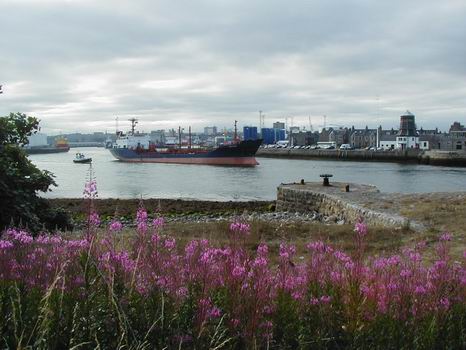
Epilobium angustifolium.
Looking west towards the River Dee a large cargo vessel is piloted out of the harbour with, in the foreground, the world wide weed Epilobium angustifolium.
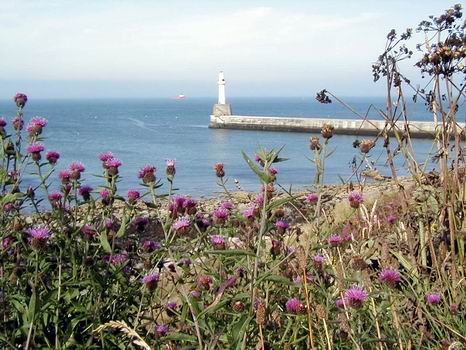
Cirsium tuberosum & light house.
Turning to face the east is a break-water pier to protect the harbour from easterly gales and another weed species Cirsium tuberosum. No one would want to introduce this invasive thistle into their garden but in a wild situation like this steep bank it is a very attractive feature.
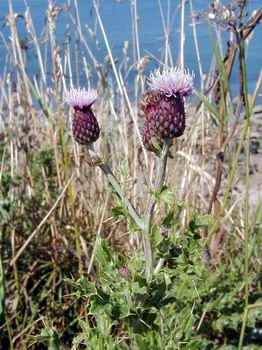
Cirsium arvense.
Another of the many thistles growing on the slopes is Cirsium arvense.
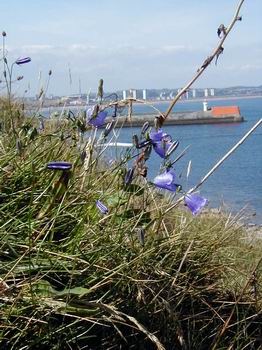
Campanula rotundifolia & sea.
Campanula rotundifolia also grows all around this headland. It would be a welcome plant to the rock garden if we could get it to settle but it seems to prefer the wild landscape.
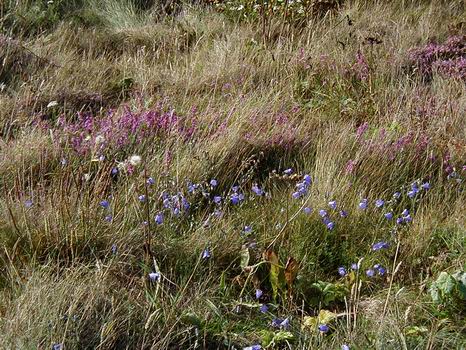
Campanula & grasses.
The campanula looks especially nice in amongst the fine grasses that sway and glisten in the sea breeze with purple heather as a colour contrast.
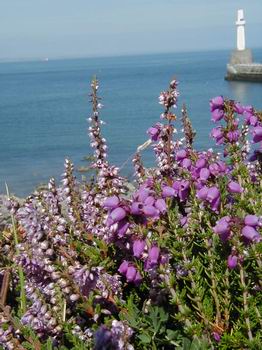
Erica and calluna.
Both native heather species, Erica and Calluna, grow in this area and I have managed to picture them intermixing on this cliff top. Another member of the ericacea common to this locality is Empetrum nigrum which covers large areas of the steep slopes, I have never seen it flower though.

Rose
At the foot of the slopes a beautiful shrubby rose with a good large flower fills the air with scent on a warm evening.
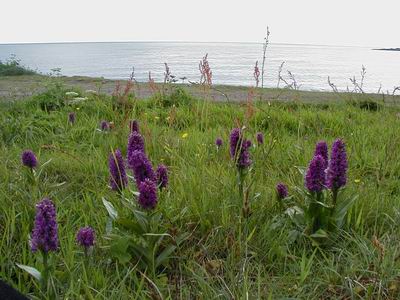
Dactylorhiza purpurella.
Dactylorhiza purpurella is one of the choice and rare species found on the headland. It grows well in the damp seeps and large groups can be seen flowering right the way down to the beach line.
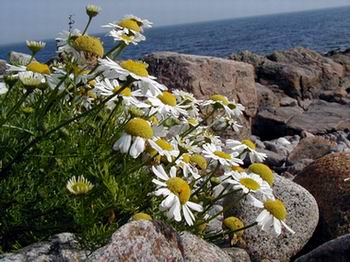 Chamomilla recutita
Chamomilla recutita
Now how is this for a rock garden scene? These lovely daises will stay very dwarf and compact when they are growing in an exposed and rocky site like this.
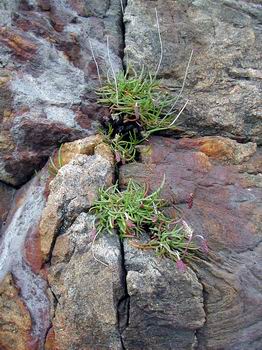
Plantago maritima.
A tiny plantago clings to a crack in the cliff face just like a real alpine pioneer.
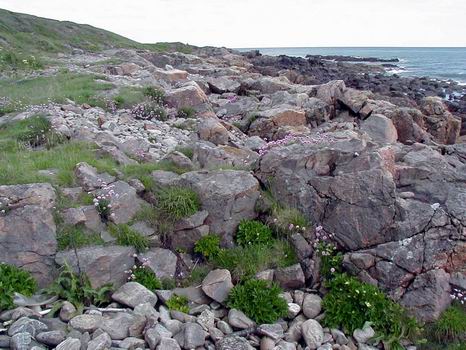
Ligusticum scoticum & Armeria maritima.
How about this for a rock feature for your garden, all the elements that we want to achieve - loose rocks, cracks and crevices with a native planting of Armeria maritima & Ligusticum scoticum.
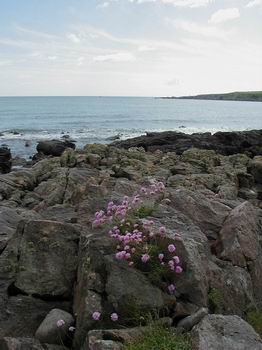
Armeria maritima.
The sea thrift grows almost to the tide line and is a topclass rock garden plant that is also found on the mountain tops in Scotland.
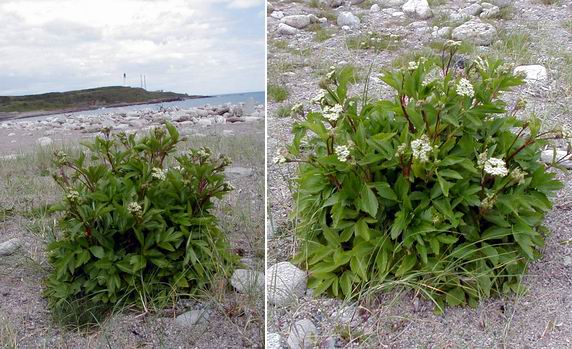
Ligusticum scoticum.
Ligusticum scoticum, lovage, grows in both the rocky and sandy parts of the shore; in the past it was eaten by sailors to help prevent scurvy.

Cochlearia danica.
I have seen Cochlearia angelica spreading along roadsides all around Scotland, including the busy roads around Edinburgh. This, the dwarfer version, Cochlearia danica, has a more restricted distribution in some costal areas.
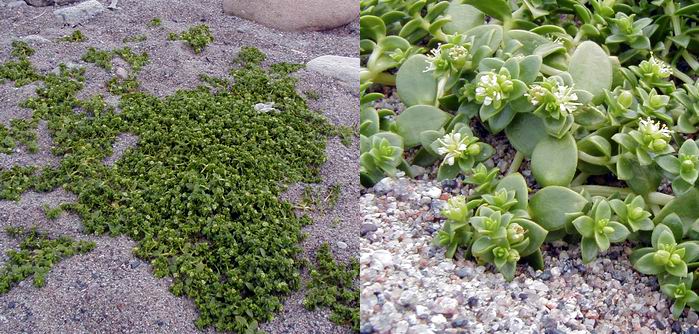
Honkenya peploides.
Honkenya peploides (Sea Sandwort) has the thick fleshy leaves of a succulent and its roots are very deep down in the sand.
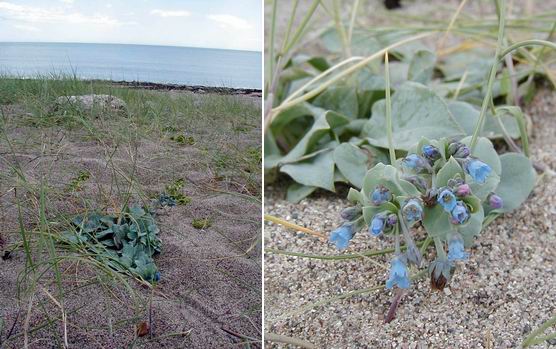
Mertensia maritima
Mertensia maritima grows in the same location as the Honkenya in the deep sand just above the high tide line. Both of these plants disappear under ground for the winter and only reappear above the sand in April.

Lotus corniculatus and Trifolium repens.
Just a bit further up the beach you will find great yellow carpets of Lotus corniculatus growing alongside Trifolium repens.
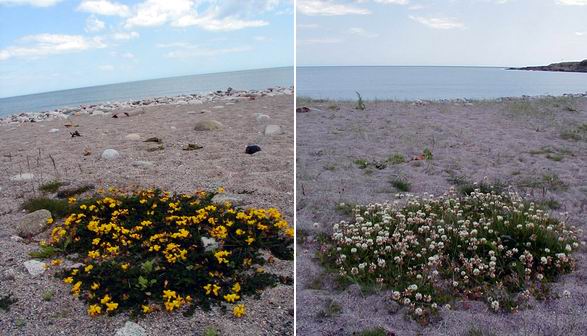
Lotus corniculatus and Trifolium repens close.
I have been very interested to read about growing difficult plants in 'sand beds' in recent Journals - it is all there in nature just waiting for us to catch up.
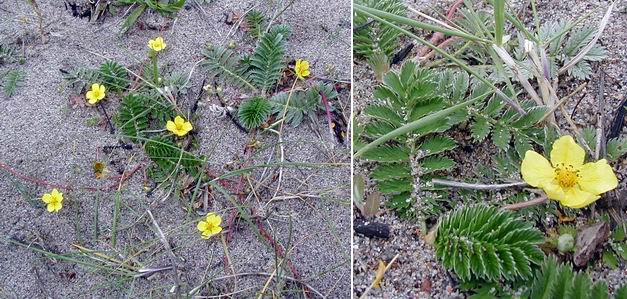
Potentilla anserina
The creeping Potentilla anserina spreads across the sand by means of red runners.
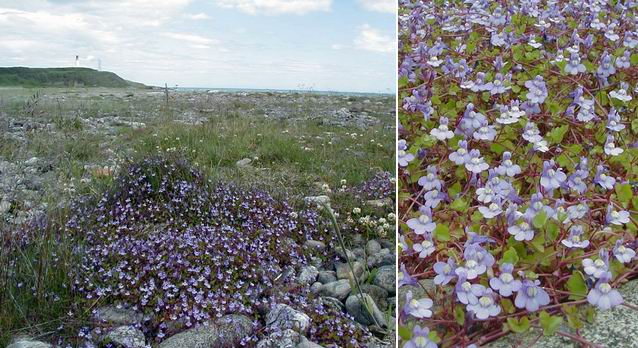
Cymbalaria muralis x2.
We are most accustomed to seeing Cymbalaria muralis growing on a city garden wall but it also enjoys the North Sea view growing here in a pebble outcrop.
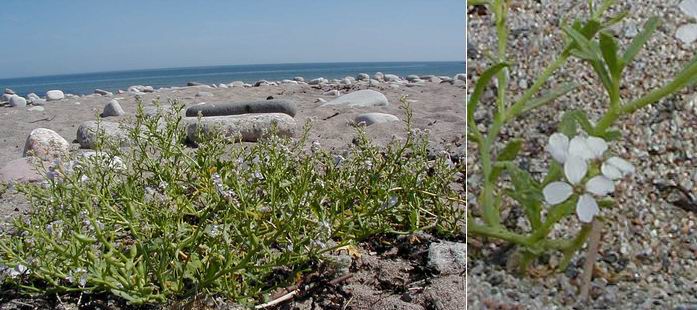
Cakile maritima 2
Back down at the tide line sea rocket Cakile maritima is perfectly at home with the inhospitable and salty conditions.
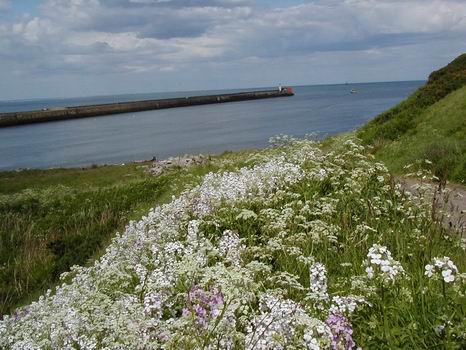
Garden escapes
Even some garden plants dumped in the past have taken up residence by the cold North Sea. I am not suggesting that you grow all these plants but there is a lot we can learn about 'rock gardening' at the seaside where, like on a mountain top, the plants have to adapt to a harsh and exposed environment and we can just enjoy some of our under rated native flora.
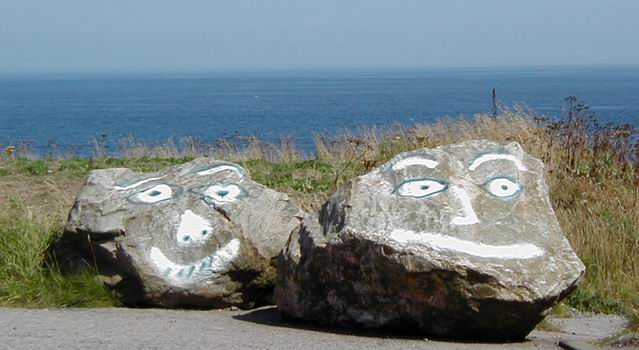
Enjoy the seaside.
^ back to the top ^
|

